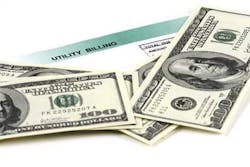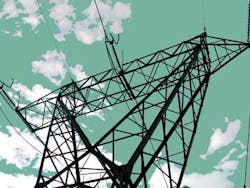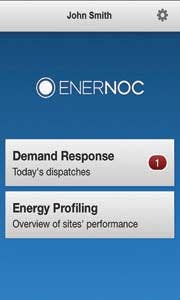Balance of Power: Water Utilities Find Ways to Reduce Energy Costs through Demand Response
By William Atkinson
Water utilities are under tremendous pressure to efficiently and economically manage the precious resource of water. The same holds true for electric power utilities as they struggle to meet increasing demands for power, while at the same time being strapped by government regulations affecting the ability to create new generation capacity.
Energy costs account for the largest percentage of a water utility's operating budget - as much as 55 percent by some estimates. As such, finding ways to reduce energy consumption - and save money - is a key objective. Demand response is one of these strategies.
Demand response is a program that allows utilities (or aggregators, explained later) to alert industrial, commercial or residential customers that energy demand is reaching peak levels, so that these clients can shut down or reduce usage of non-critical equipment. Consumers, for example, while needing to operate their air conditioners during days of high heat, can wait until evening to use other appliances, such as washers, dryers and dishwashers. In return, the customers participate in the savings that result from utilities not having to incorporate peak power generation.
There are also third-party contractors, called aggregators, that combine loads from certain utilities and make them available for demand response reduction or interruption by customers, thus acting as intermediaries between utilities and customers.
Water utilities can participate in demand response programs, helping to reduce power demands on their local utilities and save money - sometimes substantial amounts - in the process. "We have seen a lot more outreach in the last couple of years from electric utilities to water utilities, particularly in California, letting them know about opportunities to participate in demand response and other pricing programs," said Kevin Cooney, managing director, energy practice, for Navigant Consulting, Inc. (Boulder, Colo.). "Electric utilities see these programs as a resource they can invest in at a much lower cost than having to provide additional generation, particularly peak generation."
According to Cooney, water utilities may also find themselves being approached by aggregators to participate in demand response programs. "In the past, aggregators didn't focus on water utilities very much, but they are doing so more these days, in search of additional megawatts that they can add to their programs," he said.
One of the first places water utilities can start looking to shed load during demand response events is reducing pumping activities for particular periods of time or shifting the pumping to the night hours. There are other strategies available, but many of them require capital investments, whereas the pumping activities usually do not. "Water utilities that shift pumping from peak times can often save half of their energy bills, if they are able to shift enough of this pumping," said Cooney. "In the future, we anticipate a lot more of this kind of cooperation between electric utilities and water utilities."
One utility that is active in demand response initiatives with its customers is Tennessee Valley Authority (TVA), which first became involved in demand response in 2008. "We began looking at the idea of working with third-party aggregators and other outside technology providers to help us offer demand response to our customers," said Eric Ditman, M.B.A., C.E.M. (Certified Energy Manager), project manager, demand response, for TVA. "Our emphasis was to try to remove megawatts from peaks when everyone was using air conditioning and things of that nature, which would allow us to produce power less expensively."
TVA currently has nine operational demand response programs in various communities within its service territory. "We had some water treatment facilities participate in the early programs with the third-party providers," he said. Some of these worked out, but others didn't work out as well at the time. "When we started the programs in 2008, energy prices, natural gas prices and energy demands were a lot higher," he said. "After the financial catastrophe, demand decreased, and we had a decrease in sales. As a result, these days, demand response is evolving more toward a flexibility option and a regulation/management option." As such, according to Ditman, the shift toward flexibility, rather than a focus on on-peak and off-peak resources, provides water treatment plants an opportunity to participate in demand response by providing small increments of reductions throughout the day.
One water utility that has been participating successfully in a demand response program is Perris, California-based, Eastern Municipal Water District (EMWD), one of the largest water providers in southern California, serving a population of over 630,000 in a 555-square-mile area.
In 2007, EMWD enrolled with EnerNOC, a demand response aggregator, in its demand response program. "We became interested in demand response because we are always interested in pursuing cost savings opportunities," said Dan Howell, director of purchasing and contracts.
Rather than working directly with its utility on a demand response program, EMWD prefers the aggregator model because of the voluntary and flexible nature of the EnerNOC program. "The typical utility demand response program, which we refer to as an interruptible program, tends to be mandatory, with significant penalties that are assessed if you don't comply with an interruptible event," he said. "We have been a long-time participant with utilities at a number of our facilities under their interruptible tariffs, and we continue to be. However, when the third-party demand response programs with aggregators, such as EnerNOC, became available, this allowed us to further participate in demand response."
Under EnerNOC's program, according to Howell, there are no penalties involved if the utility isn't able to participate in a particular event. "We simply don't receive the financial benefits for that period," Howell said. "As a result, we can enroll additional facilities and have some level of comfort knowing that, if for some reason we are unable to comply with an event at a facility, we won't be penalized."
This isn't to say that EMWD has ever not complied, but in order to expand its ability to participate in demand response overall, the utility wanted to be able to enroll some of its critical water production facilities, which, depending on the circumstances, may or may not be able to shed load during an event. "We retain this ability by using the third-party program," he said.
EMWD achieves demand response reductions by shutting down major electricity-using equipment, such as pumps, at two of its main water treatment plants. During a demand response event, EMWD receives a 30-minute advance notification from EnerNOC then manually shuts down pumps at the two plants. These plants have redundant resources available for supplying water, which lets them temporarily operate at reduced capacity (usually about two hours).
"The biggest benefit of third-party demand response programs, of course, is the ability to save money, which ultimately saves money for our ratepayers," said Howell. By participating in EnerNOC's demand response program, EMWD receives payments from EnerNOC, which are credited back to the two plants and used to help offset their costs of electricity.
"In addition, there is a benefit for the state as a whole, as facilities such as ours and others are able to participate in demand response, since we are shaving peak points of demand, which reduces capital investments that would otherwise be required to build peaking power plants," he said.
Howell believes that the water industry in general has much to offer in this regard, given the flexibility that plants often have in order to be able to shed load at specific times of the day. "Many of our facilities have built-in redundancies, and we actually have triple redundancies in all of our wastewater facilities - electric service from the electric utilities, natural gas engine backup generation that can operate the full plant, and, in most cases, propane backup to that," he said. "In some cases, we also have diesel engine generator backup for standby emergency generation."
EMWD is now also currently working with its electric utility and Honeywell to introduce an automated demand response project. "This will allow us to literally automate our response to an event in a relatively short period of time, as compared to the manual response that we currently use," he said.
While, as noted earlier, electric utilities and aggregators have tended to be the ones to reach out to water utilities to discuss demand response opportunities, Cooney believes it would behoove any water utility to contact its account representative at its electric utility to inquire about what kind of demand response program, if any, the facility might have available. "Some electric utilities may not immediately be aware of the potential that exists with water utilities in terms of reducing power usage at certain times of the day," he said. "They may be more focused primarily on large industrial customers." As such, it is up to the water utilities themselves to suggest the idea to their electric utilities.
About the Author: William Atkinson is a correspondent for WaterWorld Magazine. He has been a full-time freelance business magazine writer since 1976, specializing in infrastructure, sustainability, supply chain, risk management, and safety/health.



